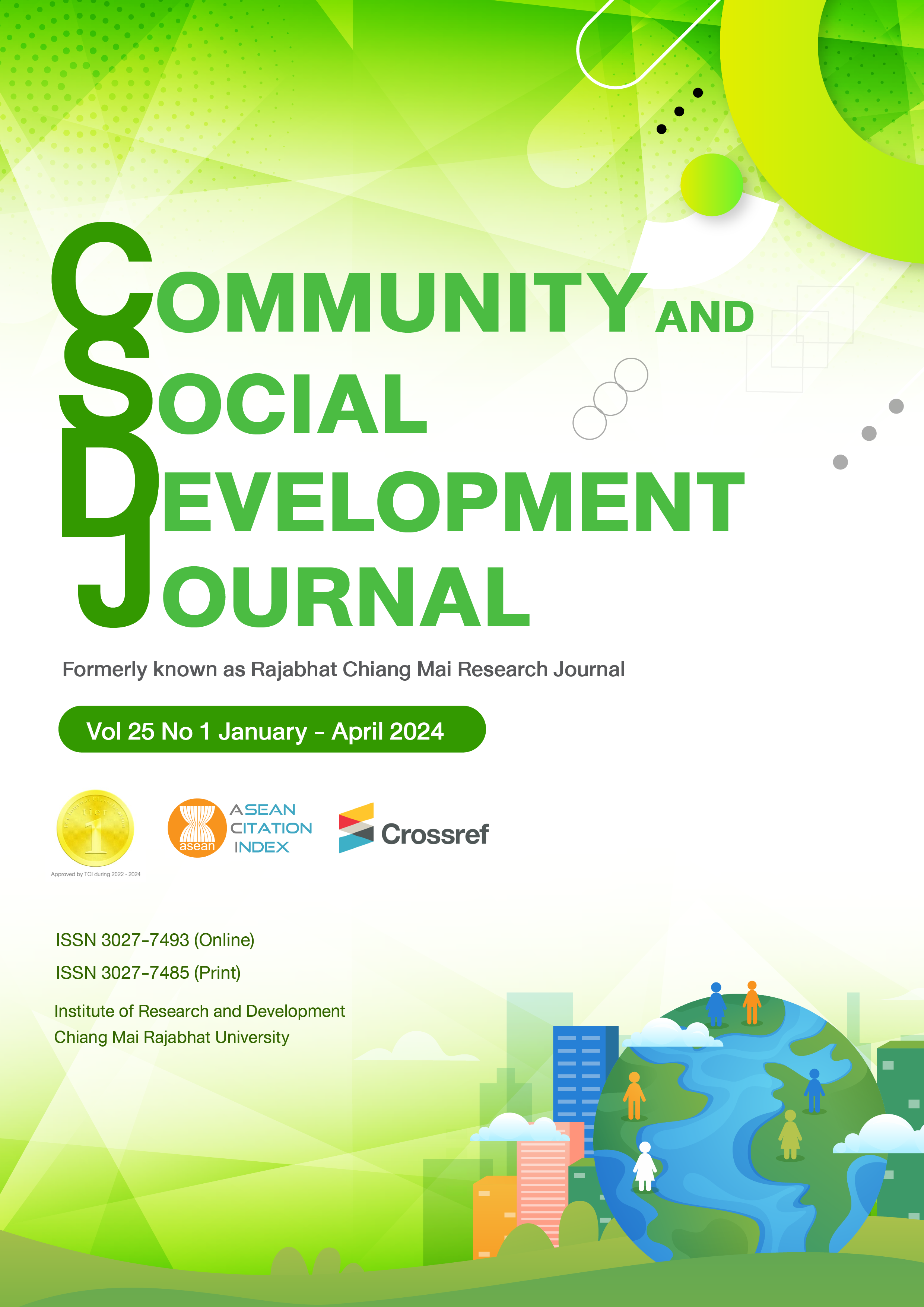Development of Fabric Surface Texture and Design Natural Dyed Hand-Woven Patterns in the Northern Regio
DOI:
https://doi.org/10.57260/rcmrj.2024.264128Keywords:
Fabric surface texture, Natural dyed hand-woven fabric, The weave patternsAbstract
This article aims to 1) Study the potential production, structure and consumer demand of hand-woven products with natural dyed fabric. 2) Develop the surface texture of fabric and design patterns of hand-woven fabrics that are suitable for textile manufacturing and meet the lifestyle of consumers. 3) Produce the prototypes of hand-woven fabrics which developed surface texture and pattern. 4) Assess consumer satisfaction with prototype product. The target group of this study is entrepreneurs of hand-woven fabrics using natural dyes in the northern region, there are 5 groups with 110 people in total, including the Ampan cotton group, Dao Mang Hemp Fabric Community Enterprise Group, Ban Pa Ngiu Karen Weaving Group, Ban Na Hang Karen Weaving Group, and Ban Huai Ta Community Enterprise Group. The research methods utilized in this study were focus groups, questionnaires, and collaboration with community entrepreneurs in developing and producing woven fabrics. The results show that the 15 woven fabrics developed by the researcher had better surface textures, with a soft touch and good recovery against wrinkles. Additionally, the new weaving structures resulted in new patterns. The researchers designed and produced 21 styles of contemporary casual wear, folk costume, and dress, which meet the requirements of consumers who value eco-friendliness, culture, healthy lifestyles, and minimalism. Furthermore, textile products such as bags, satchels, and hats were also designed and produced, emphasizing the fineness of sewing and the community product standards. Finally, the satisfaction of consumers with the prototype products was assessed, with an average satisfaction level of 4.84 out of 5.
Downloads
References
Charungchittsunthorn, W. (2005). i.d. Story Theory & Concept of Design. Bangkok: BBA Print co. ltd.
Chunthone, V. (2019). The Development of Hand-Woven Textiles: the Change of Appearance and Function, a Case Study from Ratchaburi Province. Journal of Fine Arts, 10(2), 159-180. https://so02.tci-thaijo.org/index.php/fineartsJournal/article/view/141923
Community Development Department. (2015). Operation Manual for Producers and New OTOP Entrepreneurs of the Year 2015. Bangkok: BTS Press Co., Ltd..
Donchai, T., & Wimolphusit, O. (2008). Color Shade and Plants. Chiang Mai, Fai Gaem Mai Project, Chiang Mai University, Science and Technology Research Institute.
Komonsirichok, Y. (2015). Study and Development of Wool Dyeing of Ban Huai Hom Wool Weaving Group Mae La Noi District Mae Hong Son Province with Local Natural Colors. Chiangmai: Rajamangala University of Technology Lanna.
Komonsirichok, Y., & Woraphodpornchai, P. (2018). Leveraging Natural Dyed Hand-Woven Cotton Products to Meet the Needs of Consumers. Chiangmai: Rajamangala University of Technology Lanna.
Kosiyanon, L. (1998). Textile Academic Manual. Bangkok: TTIS Co.Ltd.
Paliwanit, N. (1999). Knowledge of Fabric and Fiber (Revised edition). Bangkok: SE-ED.
Patranid, S., Piriya, K., & Prathungtip, P. (2014). The Development of Tie-Dyed Prototype with Natural Dyed. Bangkok, Rajamangala Bangkok.
Phitchayasoontorn, P. (2012). Art and Basic Design. Bangkok: Chulalongkorn University.
Prachakul, U., Khamsuk, K., & Musikapan, R. (2019). The Study and Development of Silk and Pineapple Fiber Textiles for Lifestyle Fashion Products: A Case Study of Silk Weavers Group, Baan Ta Ruea, Nawa District, Nakhon Phanom Province. Bangkok: Srinakharinwirot University.
Sustainable Arts and Crafts Institute of Thailand, (2018). Natural Fibers for Textile Development. Retrieved from https://www.sacit.or.th/th/listitem/1147?page=2
Sutakcom, O., & Komonsirichok, Y. (2021). Ecological Restoration Ban Mae Keymook Community, Tambon Ban Tub, Mae Cheam District, Chiang Mai Province with Plant Coloring and Natural Dyeing Processes for Leverage Local Textile Products. Rajamangala University of Technology Srivijaya Journal, 13(2), 484-500. https://li01.tci-thaijo.org/index.php/rmutsvrj/article/view/241030
The Support Arts and Crafts International Centre of Thailand (Public Organization), (2014). Characteristics and Pattern of Hill tribe Fabric. Nonthaburi: Siam Color Print Co,Ltd.
Umasin, N., &Tonyalae, T. (2020). The Development of a Creative Weaving Pattern of Kohyor: Development of Kohyor Fabrics in the Branding of the Product and the Prototype. Journal of Social Science and Buddhistic Anthropology, 6(12), 529-543. https://so04.tci-thaijo.org/index.php/JSBA/article/view/255269
Downloads
Published
How to Cite
Issue
Section
License
Copyright (c) 2024 Rajabhat Chiang Mai Research Journal

This work is licensed under a Creative Commons Attribution-NonCommercial-NoDerivatives 4.0 International License.
1. Articles, information, content, images, etc published in the “Community and Social Development Journal” are copyrighted by the Community and Social Development Journal, Chiang Mai Rajabhat University. In order to properly distribute the articles through print and electronic media, the authors still hold the copyright for the published articles under the Creative Commons Attribution (CC BY) license, which allows the re-distribution of the articles in other sources. References must be made to the articles in the journal. The authors are responsible for requesting permission to reproduce copyrighted content from other sources.
2. The content of the articles appearing in the journal is the direct responsibility of the article authors. The editorial board of the journal does not necessarily agree with or share any responsibility.














